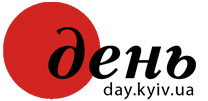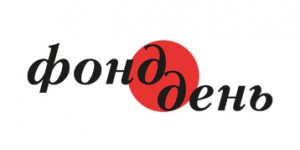Mykola Budnyk, bandurist and kobzar, master of musical instruments, poet and artist, traveler and philosopher passed away a year ago. He would have been fifty this year. On his birthday, colleagues of the Kobzar Guild, supported by the Art Veles creative agency and Ukrainian Folklore Experimental Laboratory held a soiree in his memory at the State Museum of the Literature of Ukraine.
The event of mourning gathered numerous pupils, colleagues, friends of the kobzar, and people interested in this old Ukrainian art form. People took turns sharing memories and playing traditional instruments. From the stories emerged a valiant personality who never hesitated to voice his own opinion even if different from that adopted by the system. He was free and belonged only to his art and faith. In addition to kobza-playing and upholding its tradition, Mykola Budnyk was a member of the initiative group for the rebirth of the Ukrainian Autocephalous Orthodox Church. He had gone all the way from an individual to a generalized image, like the Cossack Mamai lauded by so many artists, some of whose pictures are on the CD, On the Black Sea, released as part of the series, The Kobza and Lyra Tradition, under the project entitled My Ukraine-Bervy. The Art Veles CD was ceremoniously presented at the soiree. Mykola Budnyk’s friend and noted translator Petro Tarashchuk pointed out keenly, “Mykola was a contemplator... He could appreciate even the fleeting moment.”
The Kobzar Guild as a creative association emerged in the late 1980s, yet its history dates back to the 1950s when Heorhy Tkachenko, champion of the kobzar tradition, returned to Ukraine. Among his pupils were Mykola Tovkailo and Mykola Budnyk. After that the tradition found its followers and was never interrupted. With time the number of pupils who have embraced the kobzar’s art increased and today the guild boasts about twenty devotees. Among them is Eduard Hrach, Taras Sylenko, Mykhailo Hai. Kostiantyn Chechenia, Vadym-Yarema Shevchuk, Taras Kompanychenko (he was the soiree’s emcee)... Modern kobzars have several CDs of their own and several others will be released soon. Members of the guild restore old musical instruments (like the wheel lyre, winged psaltery, and Polovtsian horn of the thirteenth century). They continue the living kobzar tradition, compose songs and improvisations. Traditions are said to be cut short in Europe, that all they do is reconstruction, although such subjects are very much in demand. The performers see their main goal in demythologizing the situation under the Soviets and that took shape surrounding the kobzars. All would be good, except that one feels very sad after such soirees.







